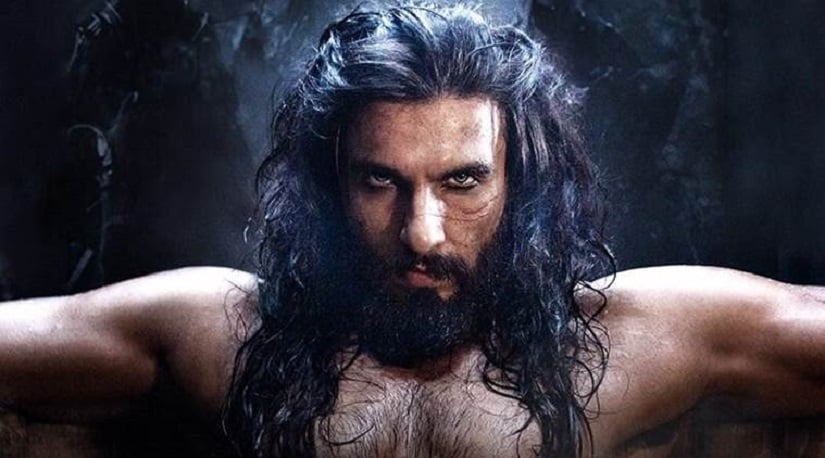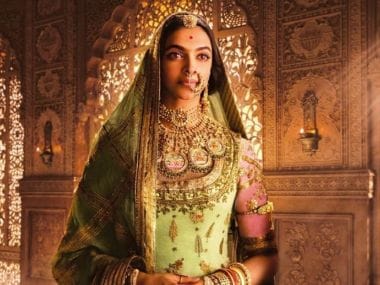Padmaavat might be a tribute to the grandeur of Rajputs, but the film belongs to Ranveer Singh
Padmaavat might be a tribute to the grandeur of the Rajputs, but the film belongs to its Khilji, Ranveer Singh.
A character with sparse historical record, all one can assimilate is that Khilji was a smart general, who could conquer difficult enemies with strategy and ruthlessness. However in Padmaavat, Bhansali has interpreted the emperor in a disappointingly flat manner. But Ranveer brings a particular brand of flair, finesse and chutzpah to the mad king. Ranveer’s actions have a touch of hyper activism, balanced out with doses of sarcasm and dark humour.
His bouts of insanity - in sleeping through a fire to his tent or his impulsive decisions to kill his rivals - are equally contrasted with his wily manipulations. He inspires his army with fake emotion and is armed with quirks onscreen. A scene where he exchanges food plates with king Ratan Singh is hilarious, as is a moment of flower sniffing by the cold blooded murderous conqueror.
The word that defines Ranveer’s performance in the film is diabolical. Ranveer’s performance in the film remains unpredictable and worthy of more screen space and layers. With Padmaavat, Ranveer Singh was bestowed an opportunity that had the potential of becoming part of the annals of cinematic genius but in the end it remains a case of so near yet so far.
Bhansali's film is a major letdown and the onus lies not on the actor but solely on the director. What the audience is left with in the end is a taste that is bitter. It’s a missed opportunity for both Sanjay Leela Bhansali and Ranveer Singh of what could have been.. Ranveer Singh brings his all to this role, at times flying off the handle but one only wishes the script had given him a few more layers to explore.
In building his magnum opus, Sanjay Leela Bhansali has preferred gloss over substance and this in turn has taken a heavy toll on the most attractive character in this visually exhausting film. Let’s admit there is not much literature on Alauddin Khilji and the only reference for Ranveer Singh would have been the director of the film. It’s bizarre, then, to see certain sequences in the film which are nothing sort of tomfoolery. One look at Ranveer’s costume in the film and we are straightaway reminded of the costume which Kublai Khan wore in the hit Netflix drama Marco Polo. One basic thought that SLB forgot while the making of the film, was that the costume which Kublai Khan wore in the series was made keeping in mind the cold climes of Gobi Desert that was central to his domain. Out here Alauddin Khilji wears the same dress to save himself from the scorching heat of the Thar Desert.
Alauddin Khilji was a warrior and history never bothered to document his war heroics. Khilji in real life was not unidimensional and a war strategist like him would probably snatch a woman without much ado. Bhansali falters yet again by villainising him for the sake of the film’s narrative and trying to fit him in the parameters of a commercial Hindi film. In the film there is not a single sequence that brings out his warrior persona save the last sequence when he enters in a duel with Maharawal Ratan Singh. There is a sequence when he goes to fight the Mongols but SLB makes it more of a symbolic gesture. He goes into the pool of dust and emerges out with a chopped head. A budget of Rs. 170 crores certainly do no justice to what could have been an amazing buildup of Khilji’s character in the film.
Bhansali has completely deviated from the path which show Khilji as a war strategist. Had he shown his strategist persona, it would have amounted to giving his character a better graph.
If only Bhansali had turned the villain of his film into an anti-hero and given opportunities to viewers for introspection. Khilji’s battle for Padmavati could have been a battle for legitimacy – of his acceptance as an emperor, instead at times, he is caricaturist.
Despite these short comings let’s be honest in giving Ranveer Singh his due. His is a performance that brings back life into a film which at best could be described as a dull. The picture perfect frames at several points become an assault on the senses. In a film where Shahid Kapoor in the role of a Rajput king looks tepid and believes that Rajputana mannerism comes only through erect and symmetrical body postures, Deepika comes into her elements only in the second half. The mantle of pumping life into a moribund film falls solely on Ranveer’s shoulders and he does perform his duty with élan.
The biggest victory of Ranveer Singh in the film lies in the fact that not even once he has given viewers an opportunity to fall in love with his character.
He follows a unidimensional approach in this regard and thus every action, every gesture and every dialogue is executed in a manner which ensures that a distance is always maintained. The sequence when Alauddin Khilji goes inside the palace to meet the Maharaja after the truce and is served lunch is a classic example how an actor can sometimes rise above a mediocre film and take it to another level.
While watching the costume drama, the feeling that Ranveer Singh is heavily bondaged with SLB’s diktats surely creeps in. One also feels that it’s the director who is holding the reigns of his performance and not once giving the versatile actor an opportunity to let loose. What could easily have been the film of the year is marred by the director’s myopic vision. Sometimes beauty can lie in simple things too.
Published Date: Jan 26, 2018 09:49 AM | Updated Date: Jan 26, 2018 09:54 AM



